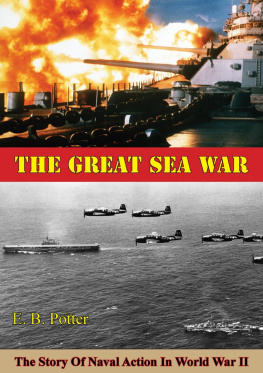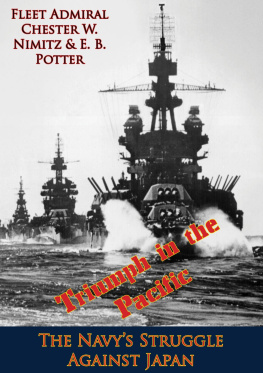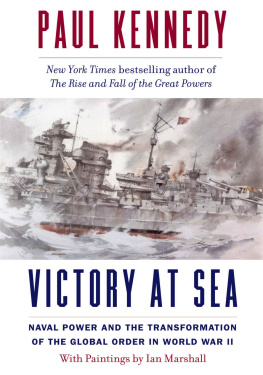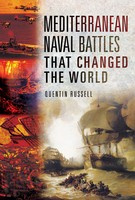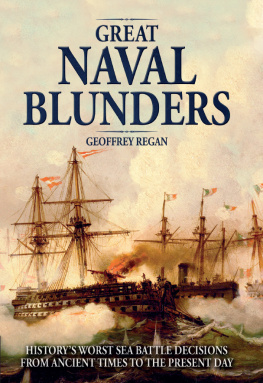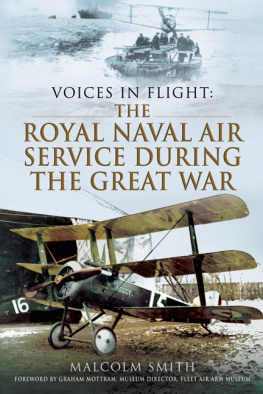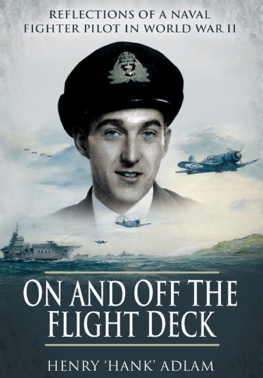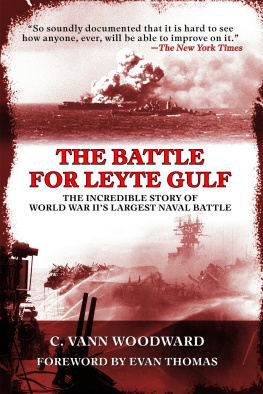E. B. Potter - The Great Sea War: The Story Of Naval Action In World War II
Here you can read online E. B. Potter - The Great Sea War: The Story Of Naval Action In World War II full text of the book (entire story) in english for free. Download pdf and epub, get meaning, cover and reviews about this ebook. City: San Francisco, year: 2015, publisher: Verdun Press, genre: History. Description of the work, (preface) as well as reviews are available. Best literature library LitArk.com created for fans of good reading and offers a wide selection of genres:
Romance novel
Science fiction
Adventure
Detective
Science
History
Home and family
Prose
Art
Politics
Computer
Non-fiction
Religion
Business
Children
Humor
Choose a favorite category and find really read worthwhile books. Enjoy immersion in the world of imagination, feel the emotions of the characters or learn something new for yourself, make an fascinating discovery.
- Book:The Great Sea War: The Story Of Naval Action In World War II
- Author:
- Publisher:Verdun Press
- Genre:
- Year:2015
- City:San Francisco
- Rating:3 / 5
- Favourites:Add to favourites
- Your mark:
- 60
- 1
- 2
- 3
- 4
- 5
The Great Sea War: The Story Of Naval Action In World War II: summary, description and annotation
We offer to read an annotation, description, summary or preface (depends on what the author of the book "The Great Sea War: The Story Of Naval Action In World War II" wrote himself). If you haven't found the necessary information about the book — write in the comments, we will try to find it.
E. B. Potter: author's other books
Who wrote The Great Sea War: The Story Of Naval Action In World War II? Find out the surname, the name of the author of the book and a list of all author's works by series.
The Great Sea War: The Story Of Naval Action In World War II — read online for free the complete book (whole text) full work
Below is the text of the book, divided by pages. System saving the place of the last page read, allows you to conveniently read the book "The Great Sea War: The Story Of Naval Action In World War II" online for free, without having to search again every time where you left off. Put a bookmark, and you can go to the page where you finished reading at any time.
Font size:
Interval:
Bookmark:


This edition is published by PICKLE PARTNERS PUBLISHINGwww.picklepartnerspublishing.com
To join our mailing list for new titles or for issues with our books picklepublishing@gmail.com
Or on Facebook
Text originally published in 1960 under the same title.
Pickle Partners Publishing 2015, all rights reserved. No part of this publication may be reproduced, stored in a retrieval system or transmitted by any means, electrical, mechanical or otherwise without the written permission of the copyright holder.
Publishers Note
Although in most cases we have retained the Authors original spelling and grammar to authentically reproduce the work of the Author and the original intent of such material, some additional notes and clarifications have been added for the modern readers benefit.
We have also made every effort to include all maps and illustrations of the original edition the limitations of formatting do not allow of including larger maps, we will upload as many of these maps as possible.
THE GREAT SEA WAR: THE STORY OF NAVAL ACTION IN WORLD WAR II
Edited by
E. B. POTTER
U.S. Naval Academy
and
CHESTER W. NIMITZ
Fleet Admiral, USN
Contents
from Fleet Admiral Chester W. Nimitz, USN
WORLD WAR II is almost beyond comparison with any previous conflict. It was fought with more weapons of more different sorts, by more men involved in a greater variety of operations, in more areas of the world than any other war in history.
Because World War II was in truth worldwide, it was basically a naval war. The Allied navies carried the Allied armies across the seas to scores of hostile shores, played a major (often the sole) part in isolating the prospective beachheads, thrust aside and decimated opposing fleets, put the invaders ashore in the teeth of enemy defenses, supported them with naval gunfire and carrier aircraft, and kept them supplied and reinforced in spite of enemy attacks from the air, surface, and subsurface. In carrying out such missions, the United States Navy grew into a vast, complex organization operating from land, sea, and air to project and maintain military power beyond the oceans.
The basically naval nature of World War II was obvious in the Pacific Ocean Areas, where the United States Navy controlled every man and every weapon of all Allied services and nationalitieswith the sole exception of the Marianas-based B-29s, which the Navy serviced but did not command. In the European theater of operations, the magnitude of the naval contribution was not so obvious, for here the supreme command was Army and here armies campaigned across vast stretches of territory. But in the European theater also it was the navies that brought the armies to the beaches, landed them, and kept them supplied. And it was the navies that brought in, or protected the ships that brought in, most of the aircraft and bombs and all of the aviation fuel for land-based air operations. In the European theater too the invading forces came more and more to depend upon the navies to isolate the beachheads and to support the landing forces. Moreover, while the Allied armies were closing the pincers on the enemy in North Africa, fighting their way up the rough spine of Italy, and surging across the plains of Europe, the Allied navies were carrying on equally far-flung and unremitting warfare on the seas. Had our navies not been victorious over enemy fleets, over enemy surface raiders, and, above all, over the U-boat, the Allied armies would have been without the means of achieving victory ashore.
Today the United States is at the center of a system of alliances involving more nations than were banded together to defeat the Axis powers. The linking element in this system of international pacts is the sea. It is important for all Americans and their friends in all lands to understand how the United States and her allies used the sea to win the victory in World War II. The Great Sea War explains clearly, accurately, and vividly how it was done.

Associated in the preparation of this volume were: J. R. Fredland and Henry H. Adams, Assistant Editors; and HENRY H. ADAMS, JAMES A. ARNOLD, WILLIAM M. BELOTE, EDWIN M. HALL, WINSTON B. LEWIS, PHILIP K. LUNDEBERG, E. B. POTTER, and O. WERNER.
THE AUTHORS of The Great Sea War have undertaken to present within a limited space a clear and understandable narrative of the most complex and widespread of all naval conflicts. They have kept in mind that war is more than a succession of battles and campaigns. It is on the one hand an intellectual problem and on the other, high drama. The authors have devoted considerable space to explaining the reasons for strategic and tactical decisions. But they have not forgotten that warfare is a conflict not only of ideas and of weapons but also of men, with their personal tragedies and triumphs.
To attain clarity, the authors have treated one facet of the war at a time, even at some violence to chronology. The story of the war against Germany and Italy is completed before the story of the war against Japan begins. The narrative of Atlantic surface operations has a chapter to itself. This is followed by the story of the Mediterranean campaign up to the turning point of the Battle of El Alamein and the Allied landings in Northwest Africa. The Atlantic submarine war next has a chapter to itself, and this is followed by three chapters covering the successful Allied landings in Africa and Europe, and the subsequent navy-supported land operations that led to the defeat of Italy and Germany. In the story of the Pacific war, the operations in the various areas are segregated as far as is possible without obscuring their close interrelationship.
The authors have omitted all details except those necessary to understanding or that are of special interest in themselves. They have avoided excessive repetition by treating at length only one operation of a particular sort, usually the first to take place. Thus in the Atlantic theater the assault on Morocco, and in the Pacific theater the assault on Tarawa, are presented in considerable detail. Subsequent amphibious assaults are described only in so far as they differed from the pattern set in these. The Battle of Midway, with a chapter to itself, establishes the pattern for carrier battles, enabling the authors to treat subsequent carrier battles at lesser lengthup to the Battle for Leyte Gulf, which, because of its complexity and the controversial decisions involved, also is treated at chapter length.
Thus by segregation of campaigns and selection of details the authors have striven to avoid sketchiness and clutter while compressing six years of worldwide naval conflict into a single volume. In order to provide a complete picture, they have carried the story far beyond the shoreline and described the major land campaigns in broad outline. The Great Sea War is in fact a general history of World War II with emphasis on the sea power aspect.
To achieve continuity, uniformity of style, and uniformity of treatment, the authors have worked together as a closely knit research and writing team. This has been possible, first, because they have similar professional backgrounds. All saw service in World War II, mostly in the naval reserve. Since then they have been associated as teachers of naval history at the United States Naval Academy. Here they have tested their ideas on each other through several years of discussion and of writing together. Most of them participated in writing an earlier preliminary study, The United States and World Sea Power (Prentice-Hall, Inc., 1955), passages of which have been incorporated into the present book. Second, the efforts of each author have been subjected to intensive analysis and criticism by his colleagues and by professional officers. Every page of The Great Sea War reflects the influence of Fleet Admiral Chester W. Nimitz USN, who was closely associated with the project from beginning to end. Lastly, the authors, besides coordinating their efforts under editorial guidance, have submitted their finished work to unlimited editing. There are numerous instances where it would be difficult to specify where one writers work leaves off and anothers begins, or to separate editorial work from original composition.
Next pageFont size:
Interval:
Bookmark:
Similar books «The Great Sea War: The Story Of Naval Action In World War II»
Look at similar books to The Great Sea War: The Story Of Naval Action In World War II. We have selected literature similar in name and meaning in the hope of providing readers with more options to find new, interesting, not yet read works.
Discussion, reviews of the book The Great Sea War: The Story Of Naval Action In World War II and just readers' own opinions. Leave your comments, write what you think about the work, its meaning or the main characters. Specify what exactly you liked and what you didn't like, and why you think so.

